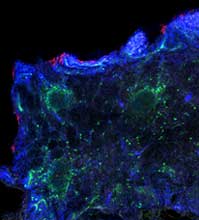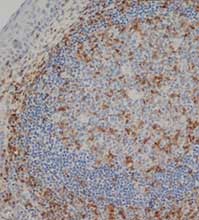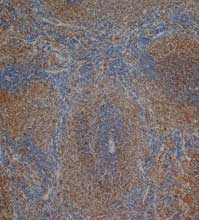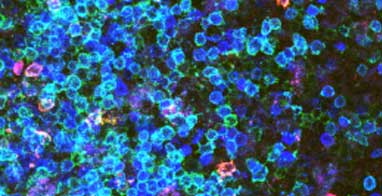-
US | en

Anti CD3 Antibody
T Cell Marker
CD3, in association with the T cell receptor, is the perfect T cell marker
CD3 is a member of the immunoglobulin superfamily which acts as a mediator of signal transduction. It is a multimeric protein composed of four distinct polypeptide chains (ε, γ, δ, ζ), consisting of two heterodimers (εγ, εδ) and one homodimer (ζζ). Each of these chains contain immunoreceptor tyrosine activation motifs (ITAMS) which are required for initiation of signalling cascades as they recruit protein tyrosine kinases, signalling intermediates and adapter molecules. CD3 is expressed by a high-percentage of circulating peripheral T cells and is present at all stages of T cell development, so is therefore used as a highly effective T cell marker.
Bio-Rad have a large range of anti-CD3 antibody formats available including Rat anti-Human, clone CD3-12, and Mouse anti-Dog, clone CA17.2A12. Additional dyes, including Alexa Fluor®, purified and low endotoxin versions are also available. An epitope on the epsilon polypeptide is conserved among many species resulting in antibody clone, CD3-12, which has a very broad species cross reactivity for the CD3 marker.
CD3 antibody images
The images below are of Bio-Rad's anti-CD3 antibody products staining T lymphocytes in various cells.

Fig 1. Animal ileal Peyer's patches stained with mamu-A1/gag tetramers (red), CD20 (green), & CD3-12 (blue). DOI: 10.1371/journal.pone.0081623

Fig 2. Formalin fixed, paraffin embedded human tonsil stained with Rat anti Human CD3-12 following heat mediated antigen retrieval.

Fig 3. Staining of paraffin embedded rat spleen with Mouse anti Rat CD3-1F4 (MCA772).

Fig 4. Axillary lymph node stained with mamu-A1/Tat tetramer+ cells (red to pink), CD8+ T cells (green), and CD3+ (clone CD3-12) T cells (blue). DOI: 10.1371/journal.pone.0081623

